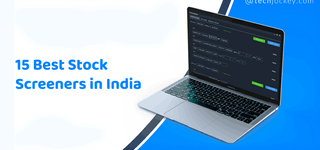The Role of Payable Solutions in Data Protection & Fraud Risk Management

We live in a technology-driven world, a world where everything we indulge in gets tracked and recorded somewhere, somehow (so much for privacy). In this environment, it becomes crucial for businesses to protect their financial data and guard it against fraud.
For secure operations aren’t just a best practice, they are a necessity. With AP frauds on the rise and payable processes becoming the most common target for attacks today, the enforcement of strong, proactive controls becomes even more significant. This makes payable solutions a crucial component of how organizations indulge in data protection and fraud risk management. Keep reading to know how…
What are Payable Solutions?
Payable solutions, in simple terms, are technological tools programmed to manage, automate, and secure accounts payable operations. From invoice capturing and matching to approval routing and payment execution, these tools are equipped to do it all. This, so your AP processes become error-free and have standardized controls in place to keep your financial information secure.
Boasting tools that enhance operational efficiency thusly, payable solutions play a key role in data protection and fraud risk management.
Suggested Read: How AP Automation Simplifies the Accounts Payable Process
How Payable Solutions Enhance Data Protection in Accounts Payable?
Accounts payable processes handle a range of sensitive information, including supplier details, banking data, user credentials and more. With no checks in place, this data becomes susceptible to leaks or theft. Payable solutions prevent that from happening in a host of ways. Some of them are listed below for your understanding…
1. Data Encryption
Payable solutions make use of encryption protocols to protect sensitive information both in transit and at rest. Be it invoices being transferred for approval or payment files sent to a bank, these make certain that data in any and every form is unreadable to those unauthorized to access it.
2. Access Controls
These solutions come equipped with sundry data protection-based access controls that let accounting teams set role-based permissions. This, so that only people authorized to access sensitive details get to use it should the need arise. This also restricts unauthorized users from fraudulently making any changes to the financial data in store.

Finifi io
Starting Price
Price on Request
3. Secure Authentication
Payable solutions use multi-factor authentication (MFA) to verify users’ identity before they can access sensitive AP data. This prevents people from unauthorized access to your financial information, boosting data protection and evading risks related to its insufficiency.
4. Compliance with Regulations
When it comes to financial management, a host of data protection laws, including GDPR, SOX etc., need to be adhered to, so businesses remain compliant at all times and steer clear of legal hassles. Payable solutions are designed to help organizations achieve just that. This, so they can avoid wasting their time and resources in building their own security systems from scratch.

Sage Intacct
Starting Price
Price on Request
5. AP Fraud Risk Management Using Payable Solutions
If there’s one aspect of business that’s extremely sensitive to fraud, it’s accounts payable. From fake invoices and internal swindling to vendor impersonation, payable processes need protection against a host of scams that can otherwise cause significant financial losses for your business. This is exactly what payable solutions are devised to detect and mitigate. Here’s how they accomplish the same…
6. Three-Way Matching
Suggested Read: Accounts Receivable vs Accounts Payable: Key Differences Explained
Payable solutions automate invoice matching. They compare invoices against purchase orders and receipts to see if amounts, vendors, or terms mentioned therein are consistent with each other. If they are, the invoice is furthered for approval.
If not, the invoice in question gets flagged. This is the most direct way in which automated tools indulge in fraud risk management, so businesses do not end up paying more.
7. Duplicate Invoice Detection
One of the most common ways of committing AP fraud is submitting the same invoice twice or more. With help from payable solutions, however, this duplication can be lessened. These tools are programmed to scan invoice numbers, dates, and amounts, so duplicate invoices, if found, get flagged on time, preventing overpayments.

Volopay
Starting Price
Price on Request
8. Vendor Management Controls
Digital scammers today, indulge in vendor impersonation by submitting false banking information to reroute payments. To beat that, payable solutions come equipped with sundry vendor onboarding controls that verify data through bank detail validation and limited edit access. These security measures work to enhance fraud risk management by restricting duplicitous vendor establishments.
9. Workflow Approvals
Payable solutions make use of digital approval workflows with customizable rules, so invoices get settled only when the right people sign off on them. These systems also ensure that one user does not get to both request and approve the payment.
This segregation of duties is done to prevent fraud from happening. By adding checks in this manner, they fix the vulnerabilities that attackers often take advantage of in manual AP processes.

Newgen Finance & Accounting
Starting Price
Price on Request
10. Behaviour Monitoring
Payable solutions include sundry behaviour monitoring features, such as pattern recognition, anomaly detection, and more. These features are at the core of modern fraud risk management. For this help can keep track of when and to whom the payments are being made.
This, so that if an employee, for instance, tries to make large payments at an odd hour or if they try to change vendor information suddenly, the system gets to block it in time to prevent potential fraud.
Risk Considerations: Manual Accounts Payable Processes vs Payable Solutions
Manual accounts payable processes involve the usage of spreadsheets, paper invoices, or unstructured email approvals to optimize payments. Not only are they thus prone to errors, but they also make the whole affair risky for all the stakeholders involved.
Since there are no audit trails to track, frauds can be easily committed and go unnoticed. Likewise, without any alerts or blocks in place, sensitive data can also be misused or stolen with ease, putting your customers at risk.
Unlike payable solutions, manual AP processes also lack basic data protection mechanisms like access control and secure storage. So, while manual systems have been in use since the beginning of time, automated systems are the need of the hour, so controls can be applied and tracked in real time.
| Aspect | Manual AP | Payable Solutions |
|---|---|---|
| Errors | Frequent | Minimal |
| Audit Trails | Absent | Auto-logged |
| Fraud Risk | High | Low with detection |
| Access | Uncontrolled | Role-based |
| Security | Weak | Encrypted & secure |
| Compliance | Manual effort | Built-in support |
Suggested Read: 12 Best Accounts Payable Software for Small Businesses to Streamline Invoice Processing
Best Practices for Implementing Payable Solutions
Whilst implementing payable solutions, businesses need to watch over a range of things, so their deployment produces valuable results. It has, in fact, less to do with purchasing the right software, and more to do with how the tool in question is configured to match your business’ policies and controls.
Some of the best practices in this regard that you can thus adhere to are listed below, one key step at a time…

Tradeshift
Starting Price
Price on Request
- Efficient Implementation: Your accounting team, in conjunction with IT team, should ensure that the payable solution works in line with the needs and demands of your business. It should have proper access rules, with a provision to log any and every activity in real time. The tool should also confirm the legitimacy of the suppliers, so unauthorized personnel do not get access to your customer info and misuse it to their advantage.
- Training of End Users: For a tool to fulfil the purpose it is intended to serve, employee training is key. That is to say, its end users should have proper knowledge on how to use it in a secure way, so they don’t fall for scams of any sort or be careless in their handling of sensitive credentials. Employees should also be made aware of all the frauds taking place in the market, so they get better equipped to evade them, should the need arise.
- Routine Monitoring: Your work does not end at successful installation; that is, in fact, where it actually begins. For regular monitoring of the payable solutions is necessary to keep them up and running at all times. These should also be updated regularly, so they remain aligned with changing risks and compliance requirements.
Conclusion
Payable solutions thus are a tool of great significance for businesses looking to secure their financial operations. For not only are they programmed to protect customer data against unauthorized access, but they also work to minimize the possibility of frauds in financial transactions.
Without them, accounts payable processes remain susceptible to a host of digital scams and breaches that can cause severe harm to a company’s reputation and overall operational integrity.
So, if you are looking to strengthen your business’ AP defences, visit the Techjockey website to get your hands on the Best Accounts Payable Software today itself! The sooner you protect your data, the greater your chances of success. Don’t believe us? Install a solution and see for yourself.
Yashika Aneja is a Senior Content Writer at Techjockey, with over 5 years of experience in content creation and management. From writing about normal everyday affairs to profound fact-based stories on wide-ranging themes, including environment, technology, education, politics, social media, travel, lifestyle so on and so forth, she... Read more

















